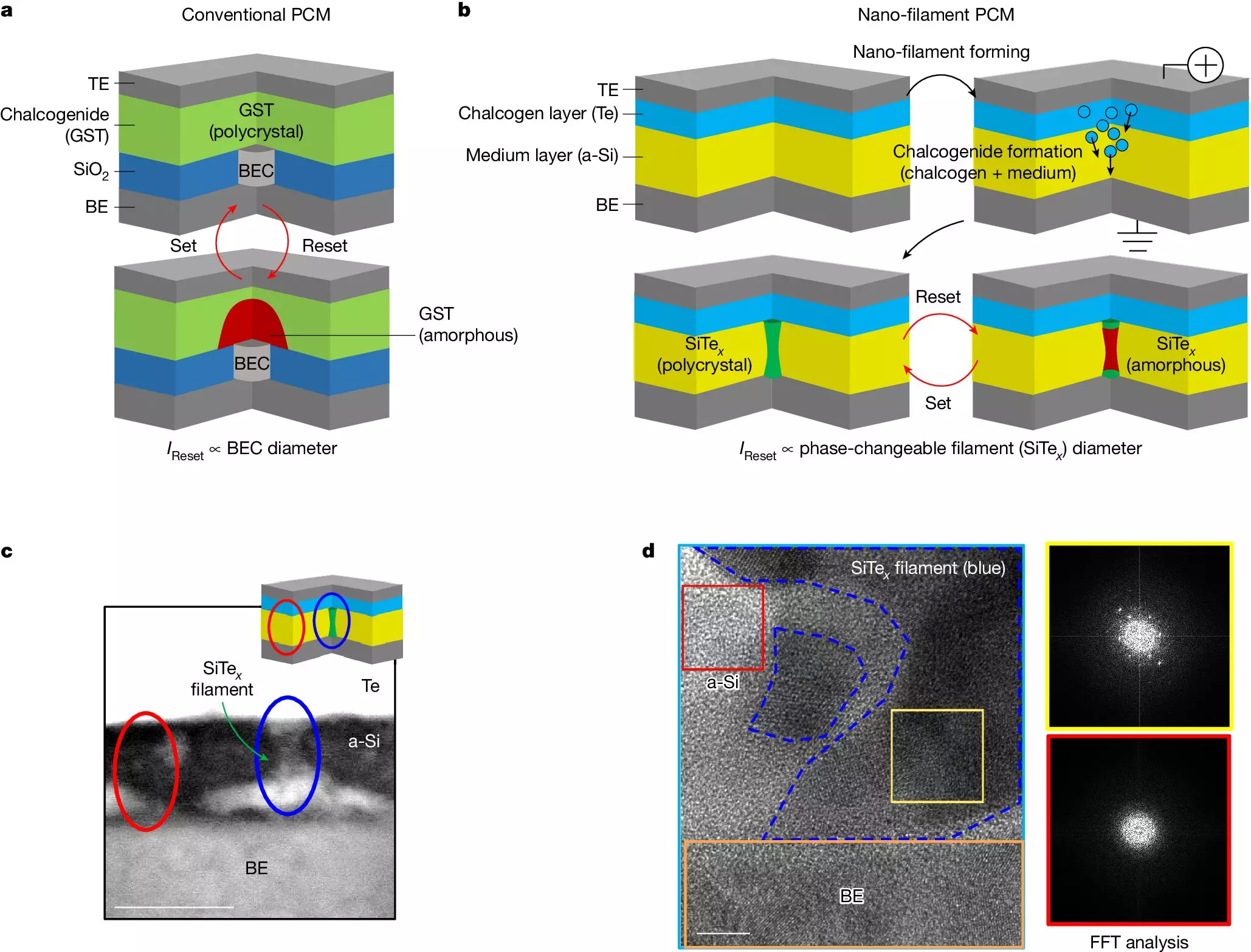A groundbreaking development in memory technology has emerged from the KAIST School of Electrical Engineering in South Korea. Professor Shinhyun Choi’s research team has successfully created a new memory device with the potential to revolutionize the field of artificial intelligence hardware. This innovative phase change memory device boasts ultra-low power consumption and has the capability to replace traditional memory components such as DRAM and NAND flash memory.
Traditional memory devices like DRAM and NAND flash memory have long been utilized in various computing systems. While DRAM is known for its fast processing speed, it falls short in terms of data retention when power is cut off. On the other hand, NAND flash memory offers non-volatile characteristics but lacks the speed of DRAM. The phase change memory device developed by Professor Choi’s team combines the best of both worlds, providing high speed and non-volatile features. This makes it a promising candidate for future memory technology that can replace existing memory systems.
Despite the potential advantages of phase change memory, previous iterations of this technology have faced challenges such as high power consumption and costly fabrication processes. Conventional phase change memory devices required significant power to operate, limiting their practicality for large-capacity memory products or neuromorphic computing systems. Previous research efforts focused on reducing power consumption through physical size reduction using lithography technologies, but these solutions were met with limitations in terms of cost-effectiveness and fabrication complexity.
Professor Choi’s research team took a different approach to address the power consumption issue in phase change memory devices. By electrically forming phase change materials in extremely small areas, they were able to create an ultra-low power memory device that consumes significantly less energy compared to conventional devices. This breakthrough marks a significant milestone in memory technology, offering a more efficient and cost-effective solution for future memory systems.
Looking ahead, the development of ultra-low power memory devices like the one created by Professor Choi’s team holds great promise for the future of artificial intelligence hardware. With its improved energy efficiency and manufacturing cost, this new memory technology is set to pave the way for more advanced computing systems and neuromorphic technologies. Professor Choi expressed confidence in the potential impact of this research, highlighting the importance of innovative approaches in solving longstanding issues in memory device production.
The development of ultra-low power memory devices represents a significant advancement in memory technology. By combining high speed and non-volatile characteristics, these devices have the potential to reshape the landscape of computing systems and artificial intelligence hardware. As researchers continue to explore new possibilities in memory technology, innovations like the one achieved by Professor Choi’s team offer a glimpse into the future of more efficient and sustainable memory solutions.


Leave a Reply